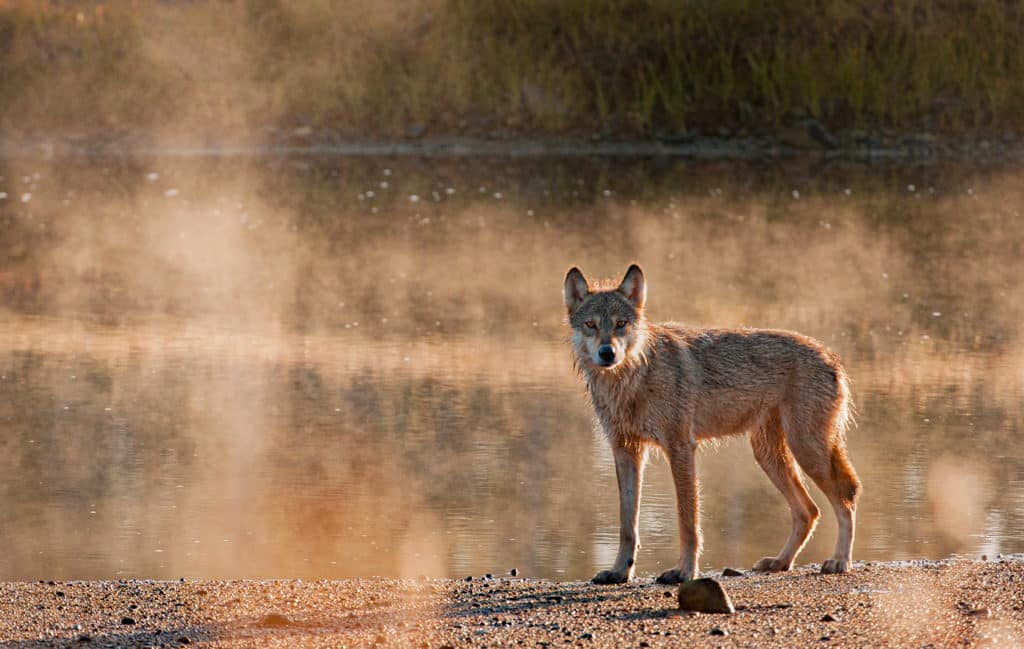Public Opinion of Wolves: A Complex Relationship with Nature
Wolves, often feared and misunderstood, have long been at the centre of debates surrounding wildlife conservation, hunting, and ecosystem balance. Wolves evoke strong emotions, and public opinion about them remains deeply polarized—especially when it comes to hunting and wildlife management.
The public’s attitude about wolves has been divided throughout time—some admire them for their intelligence and view them as essential members of the ecosystem, while others see them as pests or threats. But at the core of these differing views lies a deeper issue: the relationship between predators and humans, and how the economic and political motivations of wildlife management can shape our perceptions of wolves.

“Wolves and people were not natural enemies. The humans’ relationship with other animals established their rivalry with wolves.”
Jon T. Coleman, Vicious: Wolves and Men in America
The Vital Role of Predators in Ecosystems
Wolves are apex predators that play a crucial role in maintaining the balance and health of their ecosystems. Their presence influences not only the populations of their prey but also has cascading effects on the vegetation and overall structure of their habitats. When a wolf is removed from their environments, their role as an ecosystem engineer is left unfulfilled, leading to significant changes throughout the food web.
Wolves help maintain the health of prey populations by culling sick, weak, and old individuals, which strengthens the genetic health of the herd. This natural form of selection ensures that prey species remain strong and resilient to disease and other environmental stressors. Wolves also influence the behavior of herbivores, encouraging them to spread out and avoid overgrazing specific areas, allowing plant life to thrive. This, in turn, supports a diverse array of other species that depend on these plants for food and habitat. The absence of wolves can lead to an overabundance of herbivores, resulting in the depletion of vegetation and a decline in biodiversity.
By controlling the population and movement of herbivores, wolves create a ripple effect that impacts the entire ecosystem, that includes plant life, smaller animals, and even other predators. The return of wolves to areas where they were once eradicated has been shown to lead to improvements in forest regeneration, soil health, and water quality. In essence, wolves act as keystone species, their presence being fundamental to the overall health and stability of the environment.

Hunting and the Anti-Predator Sentiment
A significant factor shaping the public’s perception of wolves is the stance taken by some hunters, who openly share concerns about predator populations and the assumption that they require management or “control”.. This attitude, particularly towards apex predators like wolves, is largely rooted in competition for the same food sources. Caribou, deer, elk, and other animals hunted by humans are also prey for wolves, creating a tension between those who depend on hunting for food and/or sport, and those who advocate for predator conservation. In ecosystems where ranching and farming is prevalent, wolves also face hostility from farmers who view them as a threat to livestock, and hence their livelihood. This view of wolves fuels policies that promote hunting and trapping,especially in regions where wildlife drives the local economy.. These policies are not created with the ecosystem in mind, but to assert control over shared resources, particularly ungulates.
The tension is especially noticeable in British Columbia (B.C.). which has one of the most liberal hunting seasons for wolves in North America. There are no bag limits on wolves in most of B.C., meaning those with valid licensing can kill as many as they like during the season.
Additionally, the requirement to purchase a species license is non-existent, and there are no compulsory reporting requirements outside of Vancouver Island and the Lower Mainland, which means hunters are not necessarily held accountable for how many wolves they kill. The lax regulations have led to widespread hunting and trapping of wolves, where they are viewed not as a keystone species,, but as targets in a sport that is driven by a misinformed approach that killing wolves “saves” ungulate species.
Social media discussions in hunting communities often portray a deep-seated anti-predator sentiment. In these spaces, hostile comments like “Smoke a pack a day” or “Kill a wolf, save some ungulates” are commonly shared. These comments not only reflect a lack of understanding of predator-prey dynamics but also distort the vital role that wolves play in maintaining ecological balance. Wolves do not typically overeat or overpopulate. In fact, they exhibit structured, disciplined behavior in their hunting and feeding patterns. The narrative perpetuated in these online groups fails to acknowledge this complexity, instead promoting a simplistic view that wolves are merely pests and competition for food. This lack of understanding reflects one of the biggest issues in wildlife management, where predator behavior is typically misunderstood or misrepresented in the media and in policy-making.
The belief that killing wolves is necessary to protect ungulate populations is scientifically unfounded. While predators like wolves do help regulate prey numbers, removing them doesn’t guarantee healthier or more abundant ungulate herds. In fact, unchecked prey populations can lead to overgrazing, habitat degradation, and ecological imbalance. Despite this, efforts to reduce predator numbers persist. In 2024, for example, the Wild Sheep Society contributed $75,300 toward “ungulate enhancement” initiatives targeting predators like wolves, in partnership with the BC Trappers Association. These programs, operating in Region 4 (Kootenay) and elsewhere in the province, reflect how outdated perceptions of predator-prey dynamics continue to shape wildlife policy. This reinforces the need for informed, science-based conversations—ones that prioritize ecosystem health over fear and competition.
“No endangered species regulation constrains predators. However, there is virtually no known case where native predators have driven a prey species to extinction in a setting where humans played little or no role.”
Human hunters and nonhuman predators: Fundamental differences - Richard Zeckhauser
Wildlife Management: An Economic Agenda
Wildlife management in B.C. often reflects economic interests rather than a genuine commitment to ecological protection. Policies are frequently shaped to serve the needs of people and industries, such as landowners, ranchers,outfitters, and those with political influence. These economic priorities are evident, particularly when industrial activities like forestry and oil extraction are involved, and the ensuing habitat destruction has put a growing number of species at risk.
A leading example of this is the decline of caribou. In B.C., the boreal and southern mountain caribou populations are considered species at risk, with the boreal caribou listed as “threatened” under Canada’s Species at Risk Act (SARA) and the southern mountain caribou facing imminent threats to recovery. Despite the recognition of caribou as a vulnerable species, and the provincialgovernment listing habitat loss as the primary cause of their decline, the forestry industry in B.C. continues to operate in critical caribou habitat with little significant change to its practices. Scapegoating wolves distracts the public from the large-scale destruction and fragmentation that is ongoing.
Wolves, as top predators, can come into conflict with livestock operations, resulting in economic losses for farmers and ranchers. In these cases, the justification for predator control is rooted in minimizing financial losses, rather than addressing the broader ecological role of wolves or enforcing the need for implementing better animal husbandry practices. In essence, wolves are villainized rather than enforcing policies that manage for coexistence.

Shifting the Narrative on Wolves
We need to shift the conversation about wolves from one of economic conflict to one of ecological balance. As key players in healthy ecosystems, wolves help regulate prey populations and support biodiversity—benefits that extend to humans, too. Rather than treating them as threats, wildlife policies should prioritize coexistence through solutions like non-lethal deterrents and farmer compensation. The challenge isn’t choosing between people and predators—it’s recognizing that resilient ecosystems depend on both. The future of wolves depends on our willingness to value their role and embrace a more holistic, science-based approach to wildlife management.

